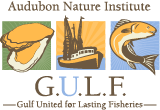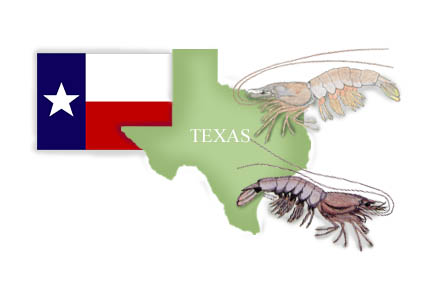Environmental influences are a significant factor in the population dynamics of brown, white, and pink shrimp, and natural and anthropogenic alteration of habitat in the Gulf of Mexico impacts every stage of the shrimp life cycle. The critical determinant of shrimp production is estuarine environmental conditions (GMFMC shrimp FMP). However, wetland loss is a pervasive problem across the U.S. The eastern U.S. lost 59, 000 acres of wetland per year between 1998 and 2004, and the Texas coast has experienced a growth in population and development. Texas has approximately 2400 miles of bay-estuary-lagoon shoreline, but some areas experienced loss in the latter half of the 20th century (Texas Parks and Wildlife 2002). Between the 1950s and 1970s, Texas lost over one-third of its coastal marshes (GulfBase.org-Habitat Loss). Activities that can contribute to habitat loss include, but are not limited to, pollution, eutrophication, and alterations in freshwater and sediment flow. Shrimp depend on the quality and quantity of estuarine marshes and submerged vegetation to successfully grow and recruit to the fishery (Turner and Brody 1983). In areas where marshes are separated from the estuary with manmade structures such as levees or bulkheads, postlarval and juvenile densities in the estuary are lower because less food is able to reach the area. Water quality and quantity are also vital factors that can affect shrimp growth and populations. Major activities that can impact water quality include but are not limited to wastewater, agricultural activities hazardous and industrial waste, land modifications for flood control, and navigational channels (Texas Parks and Wildlife 2002). Hypoxia events can affect the harvest of shrimp in the Gulf. Each year, due to runoff from agriculture and wastewater, a large area of the Gulf of Mexico, known as the Dead Zone, becomes hypoxic, usually as commercial shrimpers are resuming harvest (NOAA Projects Explorer). On the Louisiana shelf, habitat loss resulting from hypoxia has decreased the range of brown shrimp by 25% since the 1980s (NOAA Projects Explorer). Hypoxia can also affect the fishery as shrimp move in search of more suitable habitat. Texas also contains one of the busiest ports in the world, and the oil industry is one of the major economic drivers of the state. Major activities that can impact the water quality along the Texas Gulf Coast include, but are not limited to, activities associated with the petrochemical industry; hazardous and oil-field waste disposal sites; agricultural and livestock farming; power plants; municipal waste water treatment; navigation channels and pipelines (Texas Parks and Wildlife 2002).
Freshwater inflow can also impact shrimp populations. Brown and white shrimp prefer low to moderate salinities, and not enough or too much freshwater can impact their movement and growth. While pink shrimp can tolerate higher salinities, altered freshwater flow can also impact their growth and movement. Drought conditions are common in Texas, and reduced shrimp harvest has been correlated with times of drought (Powell, Matsumoto, and Brock 2002). Griffen et al. (1976) attempted to determine yield as a function of discharge from the Mississippi River, which highly impacts salinity and temperature of primary estuarine habitats in the northern Gulf of Mexico. NOAA’s Southeastern Fisheries Science Center (SEFSC) Galveston Lab recently conducted a study on temperature and salinity effects on growth and survival of white shrimp in relation to freshwater inflow and potential implications of river diversions (Galveston Lab- current research).
Previous: Stock Status Next: History of the Fishery




